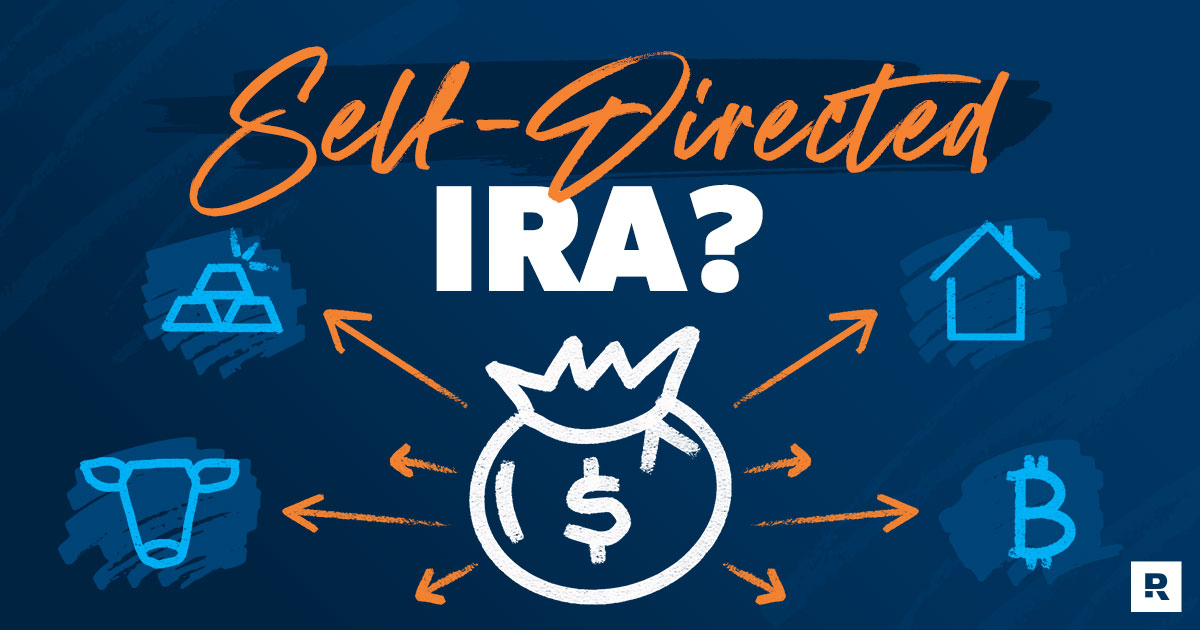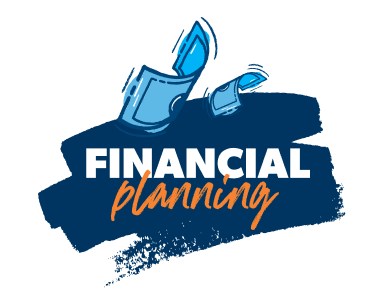What Is a Self-Directed IRA? And How Does It Work?
11 Min Read | May 23, 2024

Whether it’s having a closet full of different wardrobes or dozens of flavors to choose from at your favorite ice cream shop, we like having options.
And when it comes to investing, the self-directed IRA tries to give investors the power of choice. From real estate and livestock to promissory notes and tax lien certificates, self-directed IRAs offer folks the ability to invest in all kinds of different investments with the same benefits they would get from the “classic” version of an IRA.
Sounds great, right? But hold up! Since we’re dealing with niche investments, self-directed IRAs also get complicated. We’re talking about a laundry list of rules and guidelines to follow, high-risk investments, complicated fees, and the burden of more responsibility for your investment choices.
Let’s put self-directed IRAs under the microscope, see how they work and whether or not they have a place in your retirement portfolio.
What Is a Self-Directed IRA?
A self-directed IRA (SDIRA) is a tax-advantaged retirement account that is very similar to a traditional or Roth IRA, except they allow you to invest in a wide range of “alternative” investments that regular IRAs often don’t.
How Does a Self-Directed IRA Work?
Self-directed IRAs have a lot in common with their close cousins, the regular traditional and Roth IRA. They are designed to offer the same kinds of tax benefits, whether that’s tax-deferred growth (traditional) or tax-free growth and withdrawals in retirements (Roth).
The biggest difference that sets the self-directed IRA apart is what you can use the funds within the account to invest in. Regular IRAs offered by most brokerage firms only allow you to invest in certain types of traditional investments—like stocks, bonds and mutual funds, for example. But with a self-directed IRA, you could potentially use retirement funds to invest in things like real estate, small businesses and cryptocurrencies.
Most folks who open up a self-directed IRA usually use them for long-term investments that are more difficult to buy and sell than stocks, bonds or mutual funds that can be bought with the click of a mouse (in investing jargon, self-directed IRAs are for investments that are “less liquid”).
Here’s a list of some things you can invest in with the funds inside your self-directed IRA:
- Real estate
- Undeveloped land and livestock
- Precious metals (gold, silver, etc.)
- Cryptocurrency
- Private businesses
- Energy and natural resources (water or mineral rights, oil and gas, etc.)
- Tax lien certificates
- Promissory notes
Now it’s time to talk about the “self-directed” part of a self-directed IRA. Since custodians of self-directed IRAs (the custodian is the place where you open your IRA account) aren’t allowed to give you financial advice, that means you are the one in charge of picking and managing the investments you have inside of your account.
That’s why you usually won’t find self-directed IRAs offered at most traditional brokerage firms and banks that offer regular IRAs. Instead, there are investment companies out there that specialize in self-directed IRAs and could act as a custodian for your account.
Keep in mind that different companies might agree to handle different types of investments, so you have to do your homework before you open an account. These companies might also charge fees for creating and maintaining your account that could cut deeply into your earnings—so beware!
And one last thing: Yes, you can have both a regular and a self-directed IRA at the same time. There’s actually no limit to the number of individual retirement accounts you can own! But no matter how many accounts you have, your total contributions for the year can’t exceed the contribution limit set by the IRS.1
Self-Directed IRA Rules and Guidelines
This part is very important: There are rules and guidelines set by the IRS about what you can and can’t do with a self-directed IRA, and if you make a “prohibited transaction” or break any of the other rules revolving around your self-directed IRA, your entire account could be considered distributed to you.2 That’s a bad thing, because now all the assets in your account will probably be subject to taxes right away.
Market chaos, inflation, your future—work with a pro to navigate this stuff.
If you violate any of these rules, you could get hit with a huge tax bill, penalties and other consequences. So make sure you understand what the rules are for the type of investments you have in your account.
Prohibited Transactions
While self-directed IRAs do offer more flexibility than a regular ol’ IRA, there are some limits to what you can invest in. The IRS says you can’t invest in collectibles, life insurance or real estate that you live in. These would all be considered prohibited transactions.
We hate to break it to you, but you can’t use your retirement funds to buy that collection of super rare first edition comic books you’ve had your eye on for a while (that probably wasn’t a great idea anyway).
Disqualified Persons
In most cases, the IRS also frowns upon folks who try to buy and sell investments in a self-directed IRA with certain people where there might be a conflict of interest. These people are called disqualified persons.
Here’s a list of people you can’t make transactions with:
- Family members (your spouse, your kids, your parents and others)
- The investment company that provided your IRA
- Any entity (like a company or trust) where a disqualified person owns more than 50% of that entity
- Any entity where the IRA owner (most likely you) is an important employee or is a 10%-or-more shareholder of that entity
Self-Dealing
Some wise guys try to be smart and do business with themselves through their self-directed IRA. That’s called self-dealing, and it’s a big no-no with the IRS. Here’s the deal: You can’t buy or sell property to yourself, you can’t lend money to yourself from your IRA, and you can’t pay any expenses or take any money from the IRA home with you. So don’t even think about it!
What Is the Difference Between a Traditional and Roth Self-Directed IRA?
Just like regular IRAs, you can choose between two types of different self-directed IRAs: traditional or Roth.
Both types of self-directed IRAs have the same contribution limits as regular IRAs, and you can only take funds out of your account without getting hit with early withdrawal penalties when you are 59 1/2 years old.
A self-directed traditional IRA comes with the same set of rules as a regular traditional IRA—you can get a tax break now by deducting your contributions from your income, but you will have to pay income tax when you take money out of your account in retirement.
With a self-directed Roth IRA, you pay taxes on the money before it goes into the account so that the investments grow tax-free and the money you take out from your account at retirement won’t be taxed at all. If you do decide to open up a self-directed IRA, a Roth version is the way to go!
What Are the Pros and Cons of a Self-Directed IRA?
But before you decide to open up a self-directed IRA, you have to weigh the good, the bad and the ugly. While there are some intriguing reasons to open up a self-directed IRA, there are plenty of potential pitfalls that could end up leaving a gaping hole in your nest egg.
Pros
1. They provide more investment options and flexibility.
If there’s one thing that self-directed IRAs offer, it’s more choices and greater flexibility when it comes to the investments you can have in your account. Not only that, but you still get to enjoy the same tax benefits you would get from a regular IRA.
2. They allow you to invest based on your knowledge and experience.
Self-directed IRAs also give you a chance to save for retirement by investing in things that go hand in hand with your passions, knowledge or experience. So if you really know your stuff when it comes to rental real estate, a self-directed IRA can help you put that knowledge to use and you can buy a rental property that could appreciate in value over time and help you generate income that goes straight into your retirement account.
3. They could potentially help you diversify your portfolio.
And finally, a self-directed IRA could serve as a nice complement to any money you already have in traditional investment accounts or other retirement accounts and help you diversify your retirement portfolio.
Cons
1. They come with higher fees and complicated recordkeeping.
Because the investments inside a self-directed IRA are more complex than more traditional investments, most companies that offer them will charge higher-than-average maintenance fees that could take a bite out of your earnings. Not to mention that it could take a lot of work to keep records and keep up with all the tax reporting requirements.
2. They have a lot of rules and guidelines to follow.
Not only that, but there are also prohibited transactions set by the IRS that you have to be aware of. They are kind of like landmines that could blow up any tax benefits that come with a self-directed IRA. And if those guidelines aren’t followed, you might end up owing fees and penalties to Uncle Sam once tax season rolls around.
3. They often deal with high-risk investments.
And here’s the thing about self-directed IRAs: Most of the investments that someone would need a self-directed IRA to invest in tend to carry a lot more risk. Think about it: Do you really want to bank your retirement future on something as unpredictable as cryptocurrency or as complicated as a “tax lien certificate”?
Should I Invest in a Self-Directed IRA?
We’re going to shoot it to you straight: You probably don’t really need a self-directed IRA to invest for retirement.
Almost a hundred percent of the time, most folks are better off sticking with a regular IRA (again, Roth is best!) and their employer-sponsored retirement account to save for retirement. Here’s what we recommend:
- Invest 15% of your gross income in good growth stock mutual funds in regular tax-advantaged retirement accounts.
- Have a 401(k) with an employer match? Start there and invest up to the match.
- After that, open up a Roth IRA and invest up to the max. That way, you can take advantage of tax-free growth and tax-free withdrawals in retirement!
- And if you still haven’t hit 15%, then go back to your 401(k) and invest the rest there.
While self-directed IRAs do open the door to adding different kinds of investments, most of those options are either just too risky or too complex to even bother with. After all, just because you can invest in something doesn’t mean you should. Precious metals? Pass. The emotional rollercoaster that is cryptocurrency? You’re probably better off riding the tilt-a-whirl at the state fair.
In certain circumstances, you might consider opening a self-directed IRA to purchase a real estate property that would operate within the retirement account. But you would only do this after you’ve maxed out your traditional retirement accounts and you’re completely debt-free (that means your home is paid off too).
And remember that any rental income generated by the property doesn’t go to your bank account—it goes straight into the self-directed IRA and needs to stay inside the IRA until you’re 59 1/2 years old (unless you want to get hit with taxes and early withdrawal penalties). And we recommend that you only buy a rental property if you have the cash available to purchase it—no exceptions!
But even if you do open a self-directed IRA, you should still consistently invest in mutual funds inside your regular IRAs and employer-sponsored retirement accounts. Self-directed IRAs should complement your regular retirement accounts—not replace them.
Talk It Out With Your Financial Advisor
Self-directed IRAs can get really complicated, really quickly. And one wrong move could put you in hot water with the KGB . . . whoops, we mean the IRS. So before you make any decisions that could have a huge impact on your retirement future, talk it through with a qualified financial advisor. They can help you figure out whether or not a self-directed IRA makes sense in your situation.
Don’t have an investment pro in your corner yet? No worries! We can connect you with experienced financial advisors through our SmartVestor program. And the best part is, it’s free to get connected, and there’s no obligation to commit!
Make an Investment Plan With a Pro
SmartVestor shows you up to five investing professionals in your area for free. No commitments, no hidden fees.
This article provides general guidelines about investing topics. Your situation may be unique. To discuss a plan for your situation, connect with a SmartVestor Pro. Ramsey Solutions is a paid, non-client promoter of participating Pros.


